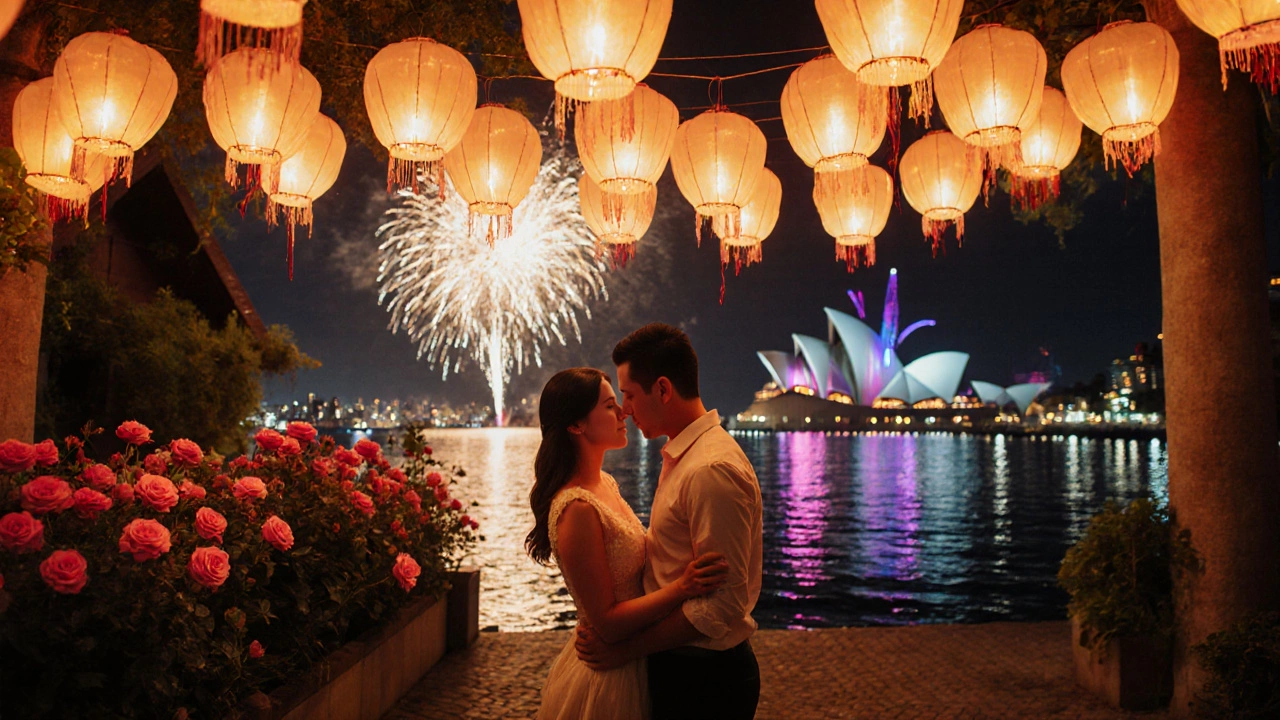Honeymoon Timing Calculator
Planning a honeymoon is exciting, but the biggest decision often isn’t the destination-it’s the timing. The Honeymoon period refers to the window of time after a wedding when couples travel for romance, relaxation, and new experiences can make or break the whole trip. Weather, crowds, costs, and local festivals all shift dramatically throughout the year, so knowing the sweet spot for each type of getaway saves money, avoids stress, and maximizes the magic.
Key Takeaways
- Match your destination’s climate to the ideal honeymoon period for comfortable weather.
- Off‑peak months often give better value and fewer tourists, but some activities may be limited.
- Seasonal festivals can add cultural flavor, just plan ahead for accommodation spikes.
- Consider your personal schedule-work leave, budget cycles, and visa processing times matter.
- Mix and match climates (e.g., beach + mountain) by choosing shoulder‑season windows.
How Climate Drives the Ideal Honeymoon Period
Weather is the first rule of thumb. A sun‑kissed beach in Bali feels perfect in July, but the same spot in December brings heavy rain and reduced sea visibility. Conversely, the Alpine valleys of Switzerland blossom in late spring, offering mild temperatures and blooming meadows-an ideal backdrop for romance.
Here’s a quick rule:
Warm‑weather spots (tropics, desert oases) shine in the cooler months of the Northern Hemisphere (Nov‑Mar).
Cold‑weather spots (mountains, northern cities) sparkle during the warm months (Jun‑Sep). This simple alignment helps you dodge extreme temperatures and enjoy outdoor activities comfortably.
Peak Season vs. Off‑Peak: What’s the Trade‑off?
Every destination has a high‑traffic season when hotels fill up, prices soar, and attractions are crowded. The opposite-off‑peak-offers lower rates and empty beaches, yet some restaurants or tours may be closed. Understanding the trade‑off lets you pick a period that matches your priorities.
| Aspect | Peak Season | Off‑Peak Season |
|---|---|---|
| Price | High (30‑60% above average) | Low (20‑40% below average) |
| Crowds | Heavy, especially at landmarks | Light, more privacy |
| Weather | Optimal, season‑specific | Variable, may include rain or cooler temps |
| Local Events | Major festivals, high energy | Fewer events, quieter nights |
| Availability of Services | Full range, all tours operating | Some seasonal businesses closed |
When romance is your top priority, off‑peak often wins. If you crave a vibrant festival atmosphere, peak might be worth the extra cost.

Seasonal Festivals: Adding Flavor to Your Honeymoon
Traveling during a local celebration can turn a good honeymoon into an unforgettable one. Think of the lantern‑lit streets of Chiang Mai during Yi Peng, the rose‑filled gardens of the Rose Festival in Bulgaria, or the fireworks over Sydney on New Year’s Eve.
But festivals also mean higher demand for rooms and transport. If a festival aligns with your ideal climate window, book six months ahead and consider staying a few days before or after the peak event to enjoy lower prices while still soaking up the atmosphere.
Budget vs. Luxury: Timing Your Spend
Money matters just as much as weather. The Budget travel focuses on cost‑effective accommodations, local eateries, and public transport thrives in shoulder months when airlines release discounts and boutique hotels lower rates.
For couples aiming for Luxury travel offers upscale resorts, private villas, and tailored experiences, the best timing is often early in the high‑season-just as the destination opens for premium services but before the crowds hit peak. Booking a private overwater bungalow in the Maldives in early December captures both prime weather and a slight dip in demand before the Christmas rush.
Mix‑and‑Match Destinations: The Power of Shoulder Seasons
Most honeymooners want a mix of relaxation and adventure. By targeting shoulder seasons-those weeks just before or after the main tourist flow-you can combine two very different climates in one trip. Example: start a week in the sunny beaches of Phuket (late April, just before the monsoon) and then fly north to Chiang Mai for a cooler, cultural experience as the weather transitions.
This strategy works well for:
- Beach + mountain: Bali (May) then Ubud highlands.
- Cultural city + nature: Kyoto (late March) followed by the Japanese Alps.
- Island hopping: Greek islands in early October, then mainland Athens for historic tours.

Practical Checklist for Pinpointing Your Ideal Honeymoon Period
- Identify your dream climate. Do you want sun, snow, or temperate weather?
- Look up the destination’s peak months. Use climate charts and tourism board data.
- Decide on crowd tolerance. Are you okay with packed beaches?
- Set a budget ceiling. Remember that peak months inflate costs.
- Check for festivals or events. Mark dates that excite you.
- Consider visa & travel logistics. Some countries have longer processing times during high demand.
- Book accommodations early. Aim for 3‑6 months ahead for peak, 1‑2 months for off‑peak.
- Plan flexible itineraries. Having a backup indoor activity helps if weather shifts unexpectedly.
Follow this list, and you’ll land on the sweet spot where weather, price, and romance intersect.
Real‑World Examples: Ideal Periods for Top Honeymoon Destinations
Below are three popular spots and the months that most travelers rate as the ideal honeymoon period based on climate, cost, and crowd levels.
- Maldives - Late November to early December. Warm seas, low rain, and before the Christmas price surge.
- Santorini, Greece - Mid‑May to early June. Blooming bougainvillea, comfortable temps, and before the July tourist rush.
- Queenstown, New Zealand - Late February to early March. Summer warmth turns into crisp autumn evenings, perfect for lake cruises and wine tours.
These windows are not rigid; personal preferences and work schedules can shift them, but they serve as reliable starting points.
Final Thoughts: Tailor the Timing to Your Love Story
There’s no one‑size‑fits‑all answer, but the guide above gives you a framework to decide when to say “I do… to the world.” Whether you chase sunshine on a tropical beach, snow‑capped peaks, or vibrant street festivals, syncing your travel dates with the destination’s optimal window ensures that the honeymoon feels as seamless as the vows you exchanged.
When is the best time to book a honeymoon?
Aim to book 3‑6 months ahead for peak seasons and 1‑2 months for off‑peak. Early booking secures better rooms and often locks in lower rates.
Can I combine a beach and a city honeymoon in one trip?
Absolutely. Target shoulder seasons when weather is mild in both locations. For example, start in Bali in May and finish in Ubud’s highlands for culture and cooler evenings.
How do festivals affect honeymoon planning?
Festivals add excitement but also drive up prices and crowds. If a festival aligns with your ideal climate, book accommodations early and consider arriving a few days before or after the main event for a balance of atmosphere and affordability.
Is it cheaper to travel during off‑peak?
Generally, yes. Flights, hotels, and even activities can be 20‑40% cheaper off‑peak. The trade‑off may be cooler weather or limited seasonal services.
What if my work schedule only allows a short honeymoon?
Pick destinations with compact itineraries-like a Caribbean island where you can enjoy beach, dining, and a short excursion in 5‑7 days. Opt for direct flights to maximize time.
